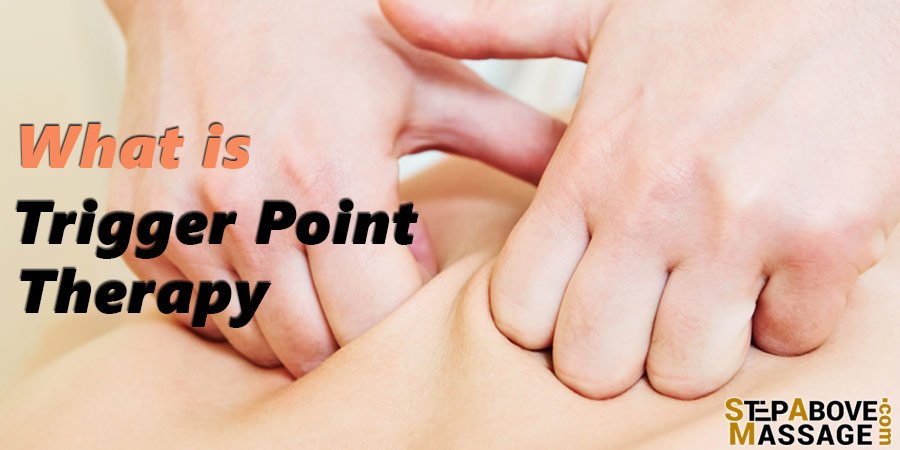What is a Trigger Point
Myofascial trigger points are tight and sore spots in contracted muscles. The word myofascial is combined of two separate words: myo which means muscle tissue and fascia which means connective tissue and the surrounding areas.
It is believed that myofascial trigger points are muscles whose injury and strain can cause pain and tightness. Assumingly, these trigger points can be the cause of pain and discomfort in other body parts. The induced pain in other parts is called referred pain.
Trigger points have two phases: active and latent. Active trigger points show throbbing and excruciating pain symptoms. They show themselves in persistent and deep pain or a sensation of burning and numbness. Trigger points can also stay latent for a few years. This type is very common and most people deal with a few of them. A trigger point can stay silent for a while after an injury but they can also restrict movements, make the muscles stiff and weak, and also change the movement patterns. If woken up, a latent trigger point can lead to more serious injuries and illnesses.
What Problems Can Trigger Points Cause
Trigger points, themselves, are claimed to be the results of various causes such as birth traumas, repetitive mechanical stress and overuse injuries, sustained loading such as carrying heavy objects, vitamin deficiencies, food allergies, improper body posture, muscle tensing due to mental stress, mechanical imbalance, digestive problems, joint disorders, etc.
Regardless of what causes them, these trigger points can cause inconvenience in other body parts. For instance, the soreness in a muscle at the top of one’s shoulder can transmit pain to other parts of the neck, head, and face. It is even assumed that some of the migraine-type headaches are caused by myofascial trigger points around the area.
Mostly, the pains caused by trigger points are treated by anti-inflammatory medications, antidepressant medications, muscle relaxants, etc. However, these complications may not easily respond to the mentioned medications if myofascial trigger points are not treated as they should be.
What is Trigger Point Therapy
Trigger point therapy, also called myofascial trigger point therapy, is a technique that can alleviate pain and functional disorder. Trigger point therapy addresses the main trigger points to reduce both the main pain and referred pain. It unties muscle contraction and spasm and can be practiced in various ways. A type of trigger point therapy is performed by applying pressure by fingers or any other therapy instrument. While the muscles are being released, the applied pressure can be increased. Another type is mostly focused on distracting the muscle from the present position which leads to a broader stretch.
What are the Benefits of Trigger Point Therapy
Trigger point therapy is believed to be effective in inhibiting neural signals which induce trigger point and pain. As a result, toughness, tension, pain, and swelling of the muscles can be reduced and muscle flexibility can be increased. Moreover, adequate circulation of blood flow, as well as oxygen and nutrition, is also promoted.
Trigger point therapy can be influential in decreasing arthritis, headaches, postoperative pain, sciatica pain, menstrual cramps, and many other sorts of pain related to injured muscles and joints. Common chronic pain in shoulders, back, and knees can also be treated by trigger point therapy.
What are the Techniques of Trigger Point Therapy
Many trigger point techniques are numbered from I to VI, each with a special amount of pressure. Sometimes, depending on the pressure they involve, an extent of pain and discomfort is induced. Nevertheless, the pain caused by the therapy should bring relief in a short time and should never be intolerable for the patient.
Techniques I, II, III, and IV of trigger point therapy respectively include local pressure on a trigger point, local stretching around the location of trigger points and the surrounding area, the broad release of connective tissue and the surrounding area, and finally release of the connective tissue as well as the intramuscular fascia.
What Does a Patient Feel During and After Trigger Point Therapy
Many patients feel soreness and fatigue during and after the treatment for a time, while several patients feel more energetic. Some patients feel pain alleviation during the first treatment and others need several incessant trigger point therapy sessions to have their pain and discomfort fully removed.
How Long Does It Take to Observe the Positive Effects of Trigger Point Therapy
The level of wellness a patient feels during and after the treatment is directly related to the phase and stage of trigger point therapy as well as the therapy type which a therapist selects based on the patient’s medical history. Among the influential factors which can define the period and difficulty level of the therapy effectiveness are: the type of injury, the length of time since the injury has occurred, the general level of wellbeing, underlying physical complications, sleep quality and level of anxiety, level of vitamin and mineral intake, etc.
On the whole, the patient can accelerate the recovery period by sticking to the therapy program advised by the therapist as well as avoidance of putting too much stress on the muscles at the early stages of the therapy.
What Should the Patient and Therapist Consider Before the Therapy
It is highly recommended that the patient consult a physician before visiting a trigger point therapist. Moreover, the patient should make sure that the therapist he/she refers to is properly trained with adequate certifications. During the first and later sessions of the therapy, the patient should frequently communicate with the therapist regarding his/her level of physical and mental sensations, such as the level of pain he/she feels and also his/her anxiety level or sleep quality.
The therapist should also fully review the patient’s medical history as well as examining his/her pain patterns and trigger points. Moreover, the therapist should advise the patient on what to do between the therapy sessions, including drinking large amounts of water before and after the sessions. He/she should also make proper suggestions regarding the patient’s self-management of his/her movement program.











It’s interesting to learn that trigger point therapy can help with reducing swelling and increases muscle flexibility. I’ve had a lot of swelling in my legs and I don’t know why it’s been bad. Looks like I should try out the trigger point massages to help with my swelling.